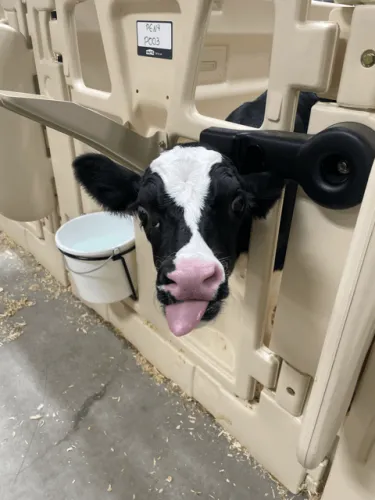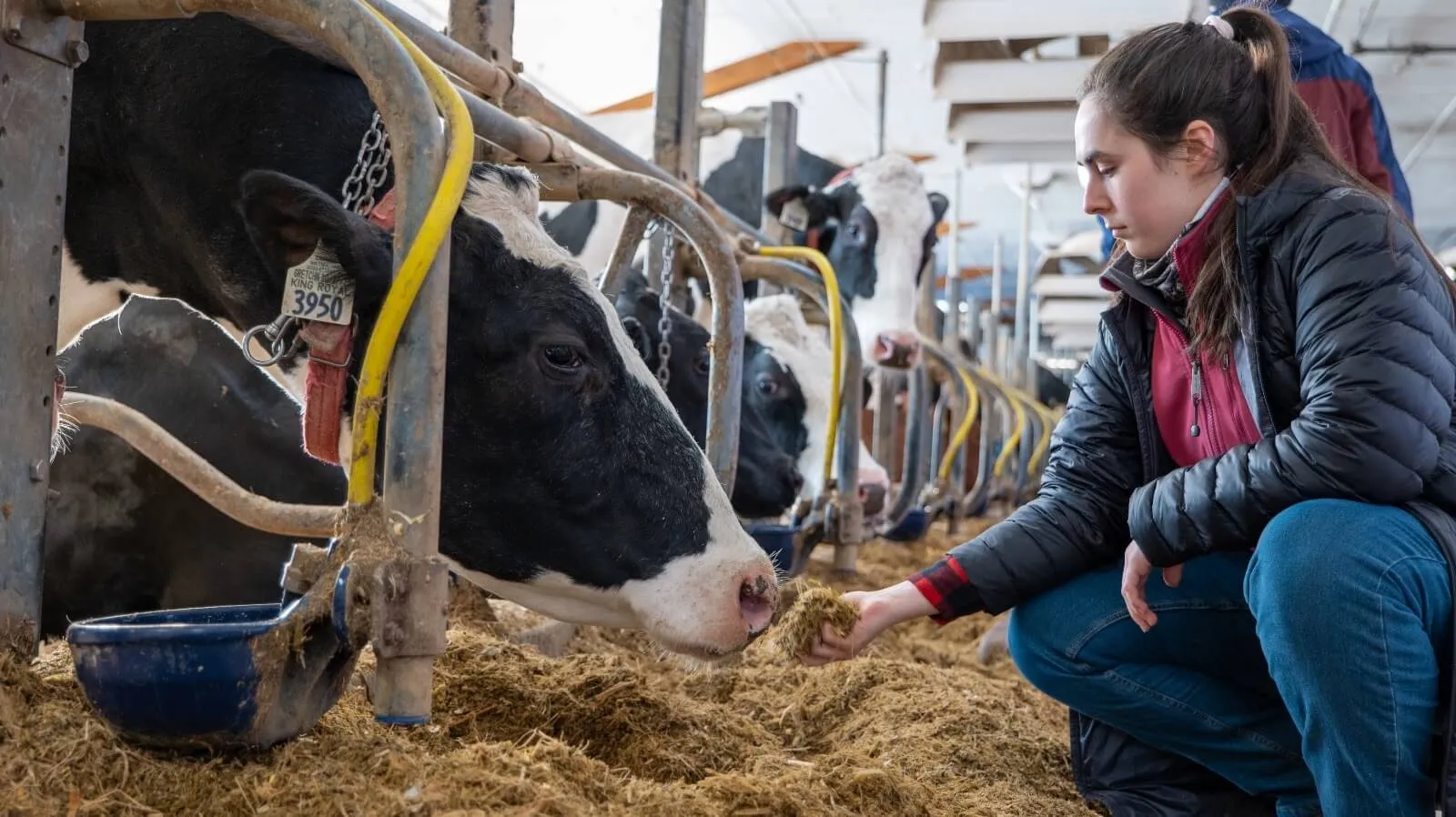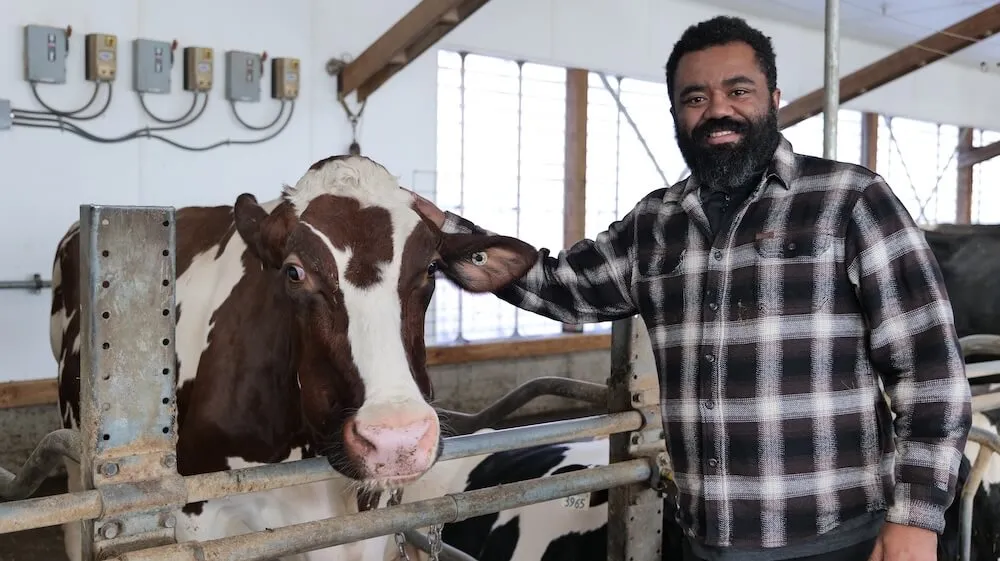Lopez-Bondarchuk was recently awarded the CALS 2025 Graduate Research Excellence Award. "Working with dairy calves and these specific trials that we do, it's a lot of work, a lot of nights in the barn, so to know that all this work led up to something like this and to receive such a prestigious award from the university, it felt awesome. I'm very happy. And even though it's in my name, it's not just an award for me but for everyone who's been able to assist with this project, because it takes a whole community to get animal science research done. It takes many people at a time at the barn to do sample collection and maintain the animals. So yeah, it's fantastic that we're recognized in this way, and I share it with everyone in the lab."

Her research focuses on the early life and health of calves. She came to UVM for graduate studies after completing her undergraduate work in Animal Science at the University of Guelph, about 45 minutes West of Toronto in Canada. She chose UVM because of the work being done at UVM with colostrum. "This particular project was aligned with some of the things that I wanted to do for my master's program, and Vermont is also a beautiful place to live."
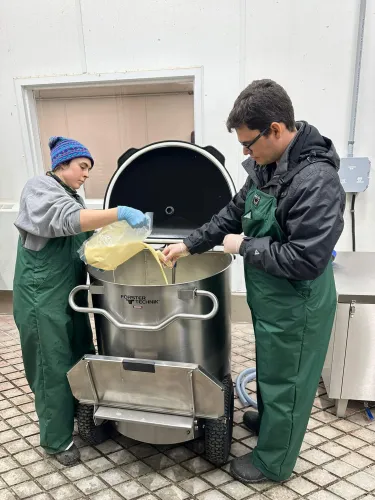
Her thesis has two parts exploring nutrition in calves: first, during the short 72 hours they receive colostrum, and then the 0 to 63 days of the milk-fed portion of their lives. The colostrum study focuses on how a particular protein affects the absorption of immune factors in calves' early life. This research formed the basis of a recently published paper in the Journal of Dairy Science. The second portion focuses on trace mineral fortification in milk replacers, how it affects the health of calves during the milk phase of their nutritional life, and how it affects future performance. There are different forms of trace minerals and different amounts fed to calves.
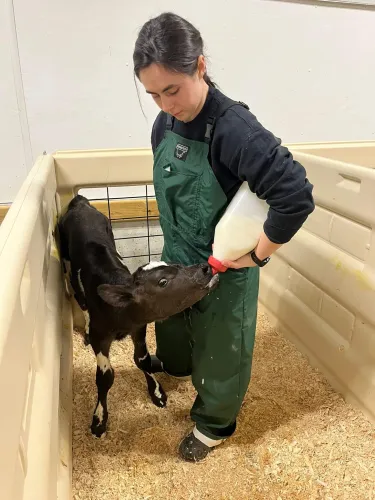
"Our work in the Costa Lab, and the work that I've been pursuing, is incredibly applied research: How farmers can be more informed about the ways their practices affect the life cycle of their calves. A lot of the work that we're trying to do is to maximize the early life of calves by making sure that there's very little morbidity in their calves, because ultimately that leads to more sustainable practices. So, through these particular interventions, understanding colostrum protocols and understanding some of the other tools you can use to improve that early life. Dairy farmers can hopefully make decisions that are suitable for their farms and help improve their overall system."
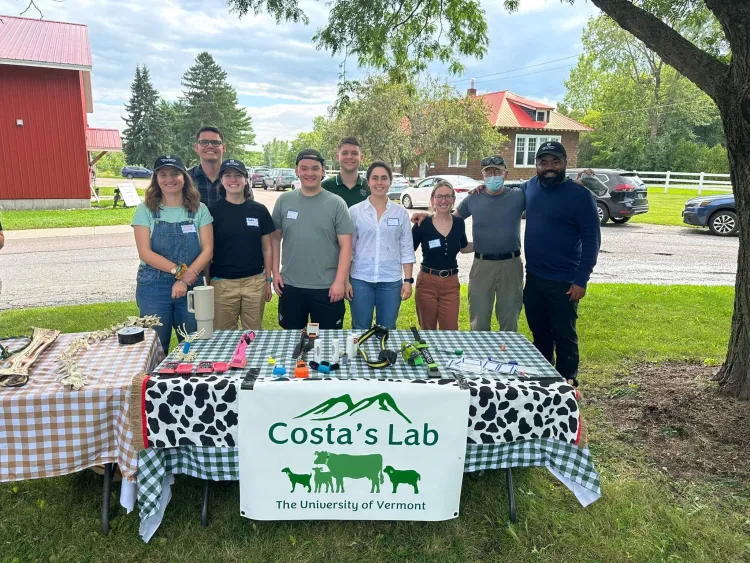
One of her favorite parts of her time at UVM has been teaching undergraduates, "Every semester that I've been here, I've been teaching Animal Anatomy and Advanced Animal Nutrition, and I got to hone in on some of the important things related to nutrition and the work that I'm doing. It's really awesome to see the students get engaged and kind of fall in love with the same things that I'm interested in related to nutrition."
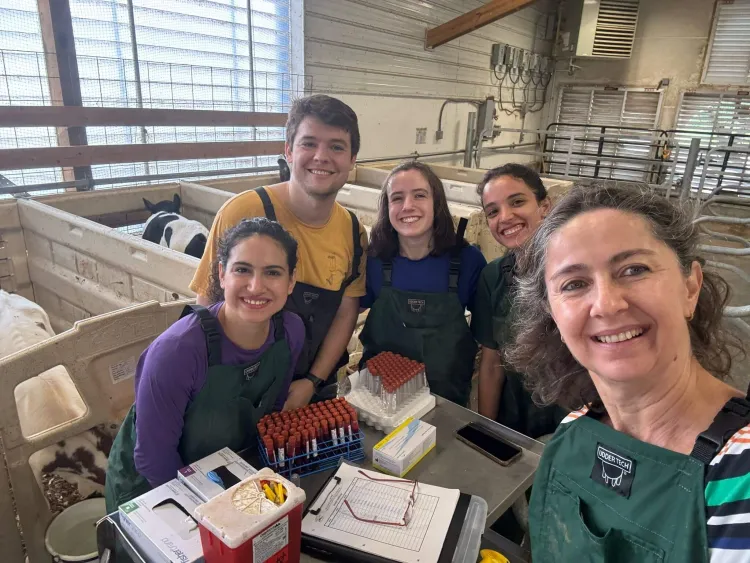
But she credits her department and fellow graduate students as to what has brought about the biggest changes in her during her time in her master's program, "The best part has been the community that has been developed, especially the relationships that have been built in these past two years under my new advisor, Dr. Joao Costa. There's been a really strong effort to bridge relationships here in the department with the CREAM (Cooperative for Real Education in Agricultural Management) Barn and with the CREAM students. That relationship has been integral, especially for the project that we did on the trace mineral work. We would not have been able to get that trial done without their help, and that's kind of been a jumping-off point for some of the other research projects. Some of the other classes that I've taken here, such as my graduate seminars, have been really important. I think for me -- as someone who is a little bit more introverted and a little bit more nervous to share the things that I've been doing throughout my program -- it gave me a nice way to improve my ability to communicate the work that I've been doing amongst other folks who are doing animal science research and food science research. So, they've been able to provide feedback on how I can better communicate the work that I'm doing."
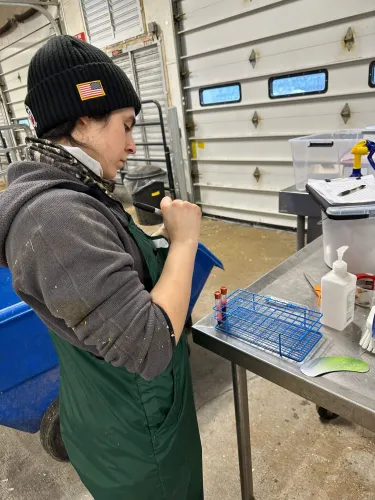
Her plans after graduation are focused on taking her knowledge into a commercial application, "I'm really looking forward to going into the dairy industry and working perhaps for an animal nutrition company to learn more about the particular products that are out on the market, or providing technical assistance based off of the work that I've done with cows and dairy calves."
